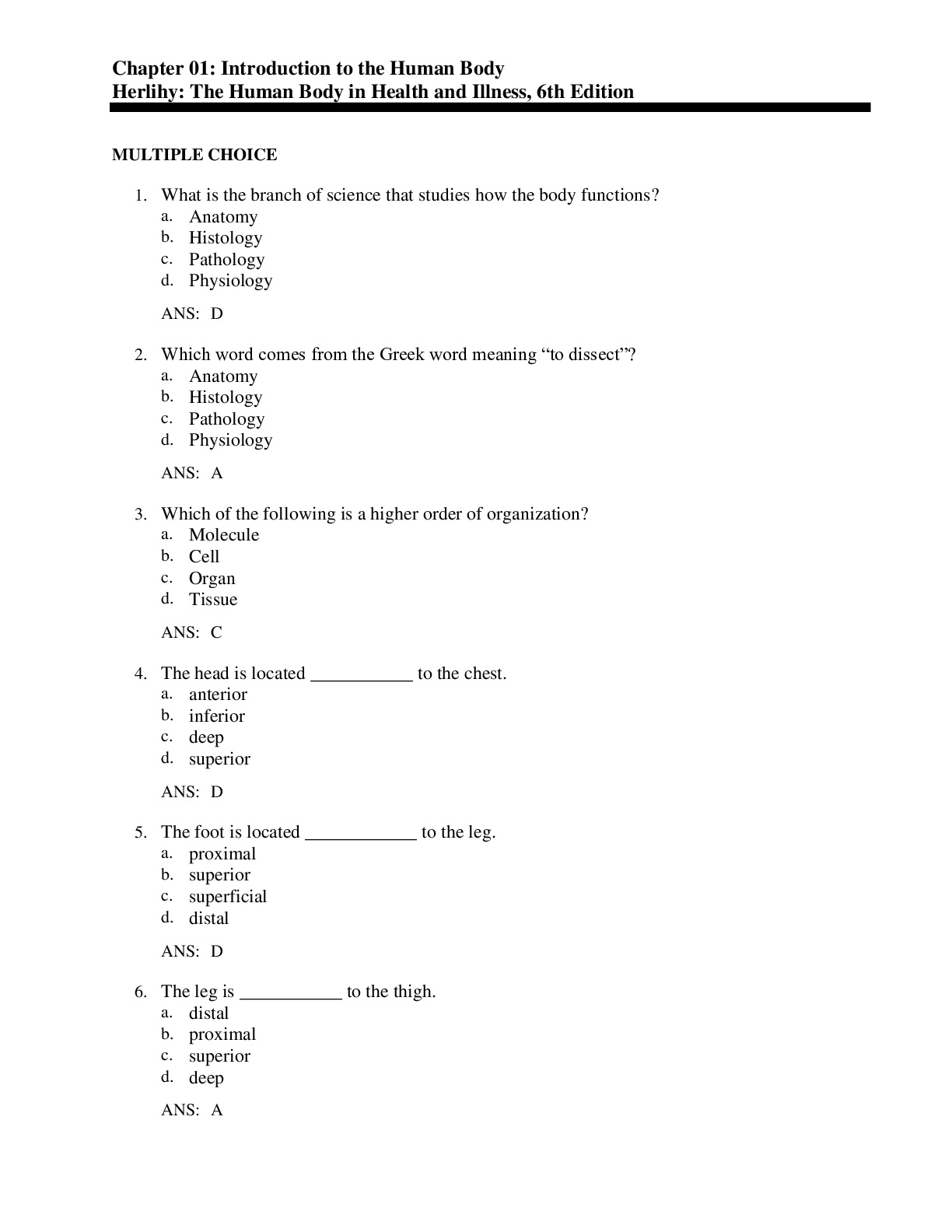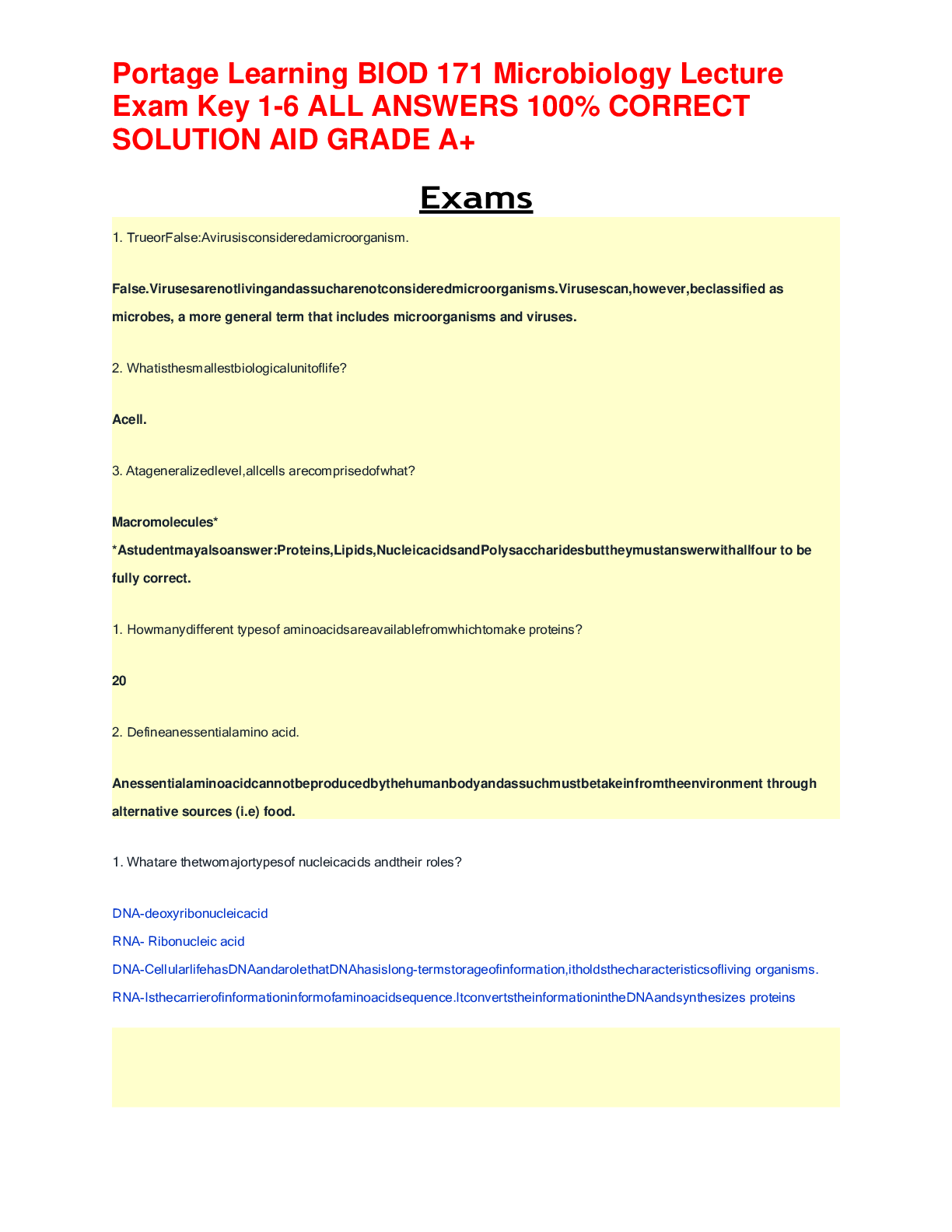Search for
Filter By
Rating
Price in $
Search Results 'Body'
Showing All results
Sort by
Anatomy and Physiology - A&P 1 > TEST BANK > TEST BANK for The Human Body in Health & Disease 8th Edition by Patton, Bell, Thompson and Williamson. ISBN 9780323882392. (Complete 25 Chapters) (All)
*NURSING > TEST BANK > c03.Cells and Tissues Thibodeau & Patton: Structure & Function of the Body, 14th Edition (All)
*NURSING > EXAM > PHA 1500 STRUCTURE AND FUCTION OF HUMAN BODY FINAL EXAM MODULE 6 (All)
Biology > EXAM > G150/PHA 1500 - Rasmussen College Module 06 Section 13. Structure and Function of the Human Body. 72/75 Points. (All)
*NURSING > TEST BANK > Test Bank for Structure and Function of the Body 16th Edition Patton All Chapters (All)
*NURSING > TEST BANK > THE HUMAN BODY IN HEALTH AND ILLNESS, 6TH EDITION BY: BARBARA HERLIHY TEST BANK ISBN: 9780323498449 (All)
*NURSING > EXAM > Introduction to the Human Body Herlihy: The Human Body in Health and Illness, 6th Edition (All)
Business > TEST BANK > Test Bank For Memmler's Structure & Function of the Human Body, Enhanced Edition 12th Edition By Barbara Janson Cohen (All)
ATI Med Surge/ ATI Medsurg > ANSWERS AND COMMENTARIES > Portage Learning BIOD 171 Microbiology Lecture Exam Key 1-6 ALL ANSWERS 100% CORRECT SOLUTION AID GRADE A+ Course Portage Learning BIOD 171 Microbiology Lecture Exam Key 1-6. (BIOD171) Institution Portage Learning True or False: A virus is considered a microorganism. False. Viruses are not living and as such are not considered microorganisms. Viruses can, however, be classified as microbes, a more general term that includes microorganisms and viruses. 2. What is the smallest biological unit of life? A cell. 3. At a generalized level, all cells are comprised of what? Macromolecules* *A student may also answer: Proteins, Lipids, Nucleic acids and Polysaccharides but they must answer with all four to be fully correct. 1. How many different types of amino acids are available from which to make proteins? 20 2. Define an essential amino acid. An essential amino acid cannot be produced by the human body and as such must be take in from the environment through alternative sources (i.e) food.Portage Learning BIOD 171 Microbiology Lecture Exam Key 1-6 ALL ANSWERS 100% CORRECT SOLUTION AID GRADE A+ 1. The plasma membrane (select all that are true): A. Restricts movement of materials in and out of the cell B. Is often a triple layer comprised of lipids C. Prevents essential nutrients from escaping D. Contains hydrophobic tails pointing outward A and C 2. How many carbon atoms are present in the monosaccharide glucose? A. 1 B. 3 C. 6 D. 12 (All)
Chemistry > GIZMOS > Student Exploration: Dehydration Synthesis Vocabulary: carbohydrate, chemical formula, dehydration synthesis, disaccharide, glucose, hydrolysis, monosaccharide, polysaccharide, valence Prior Knowledge Questions (Do these BEFORE using the Gizmo.) 1. If you exercise on a hot day, you need to worry about dehydration. In this context, what do you think dehydration means? Dehydration is the loss or removal of water from your body. 2. Astronauts and backpackers often bring dehydrated food. What do you think dehydrated food is? Dehydrated food is food that can be preserved by extracting the moisture which will allow for the growth of microorganisms Gizmo Warm-up What do rice, potatoes, and sugar have in common? They are all foods rich in carbohydrates. Carbohydrates are an important energy source for your body. The basic building block of most carbohydrate compounds is the molecule glucose. Using the Dehydration Synthesis Gizmo™, you will learn about the structure of a glucose molecule and how glucose molecules can be joined together to make larger carbohydrate molecules. To begin, select the CREATE GLUCOSE tab. 1. Look at the chemical formula for glucose. How many carbon (C), hydrogen (H), and oxygen (O) atoms are found in a molecule of glucose? C:____6___ H:__12_____ O:___6____ 2. Turn on Show chemical structure. Each black sphere represents a carbon, hydrogen, or oxygen atom. The lines connecting the spheres represent chemical bonds. A. How many black spheres are in the diagram? ____24 (All)
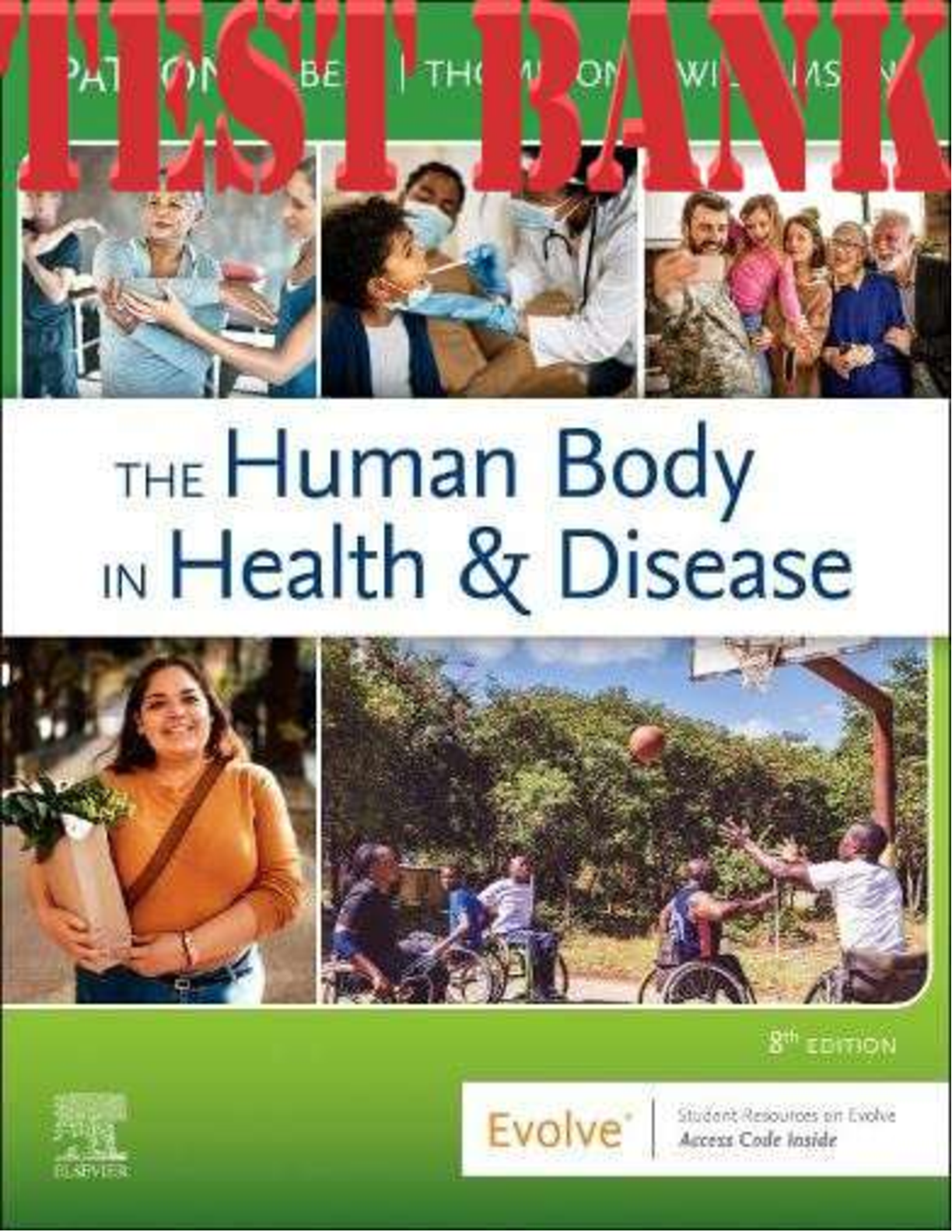
.png)

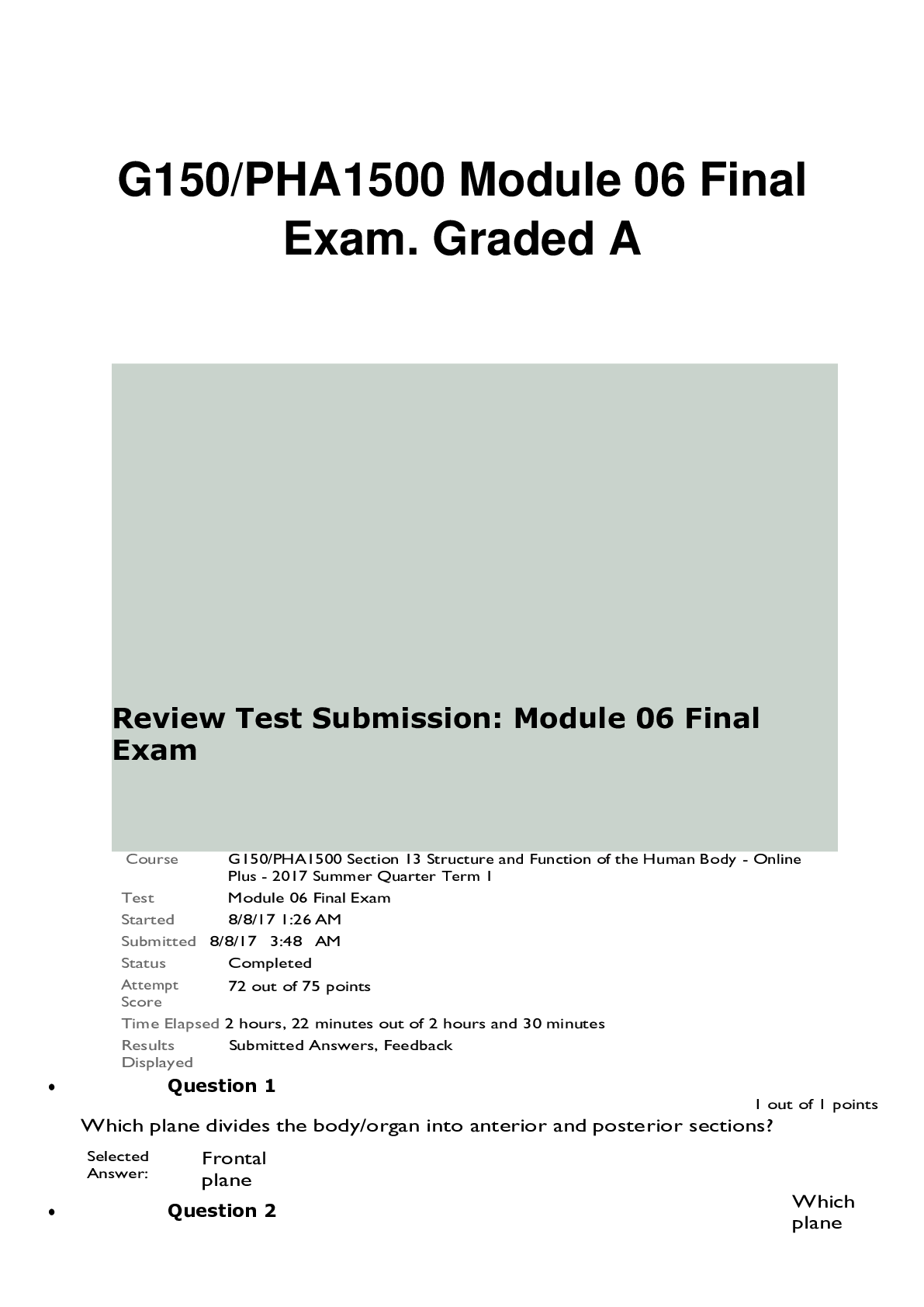
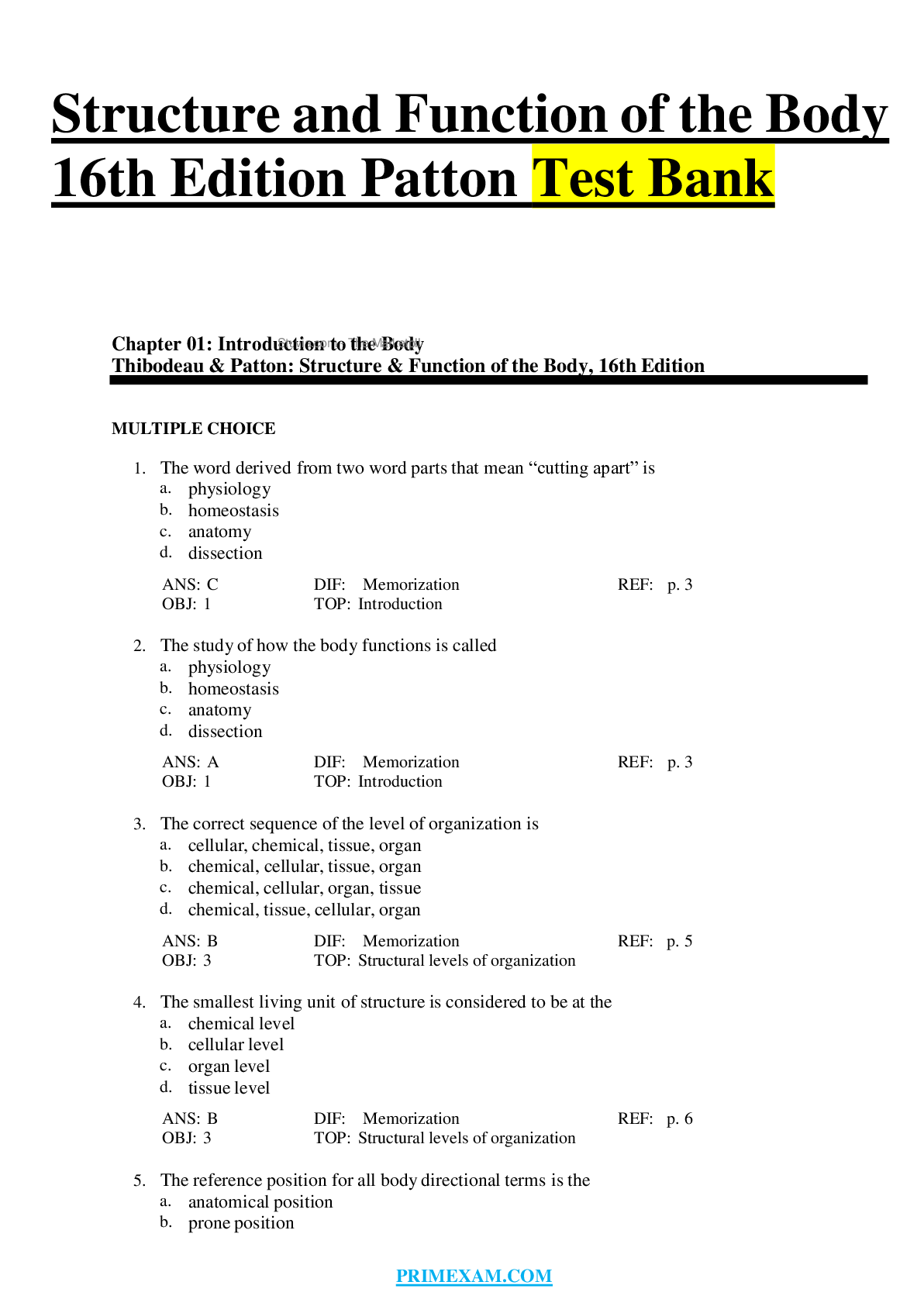
.png)
